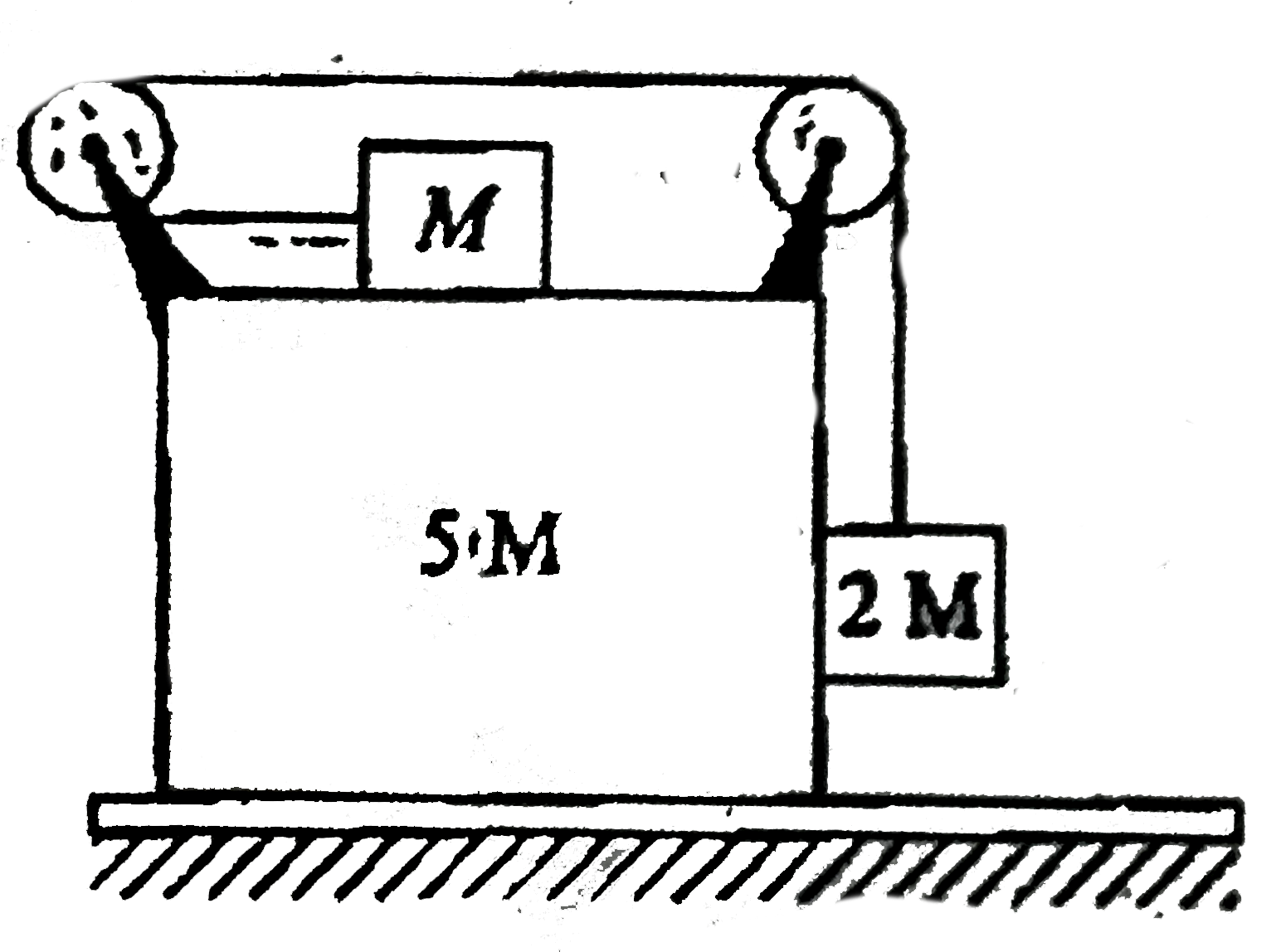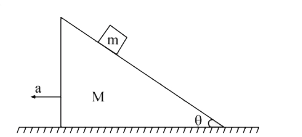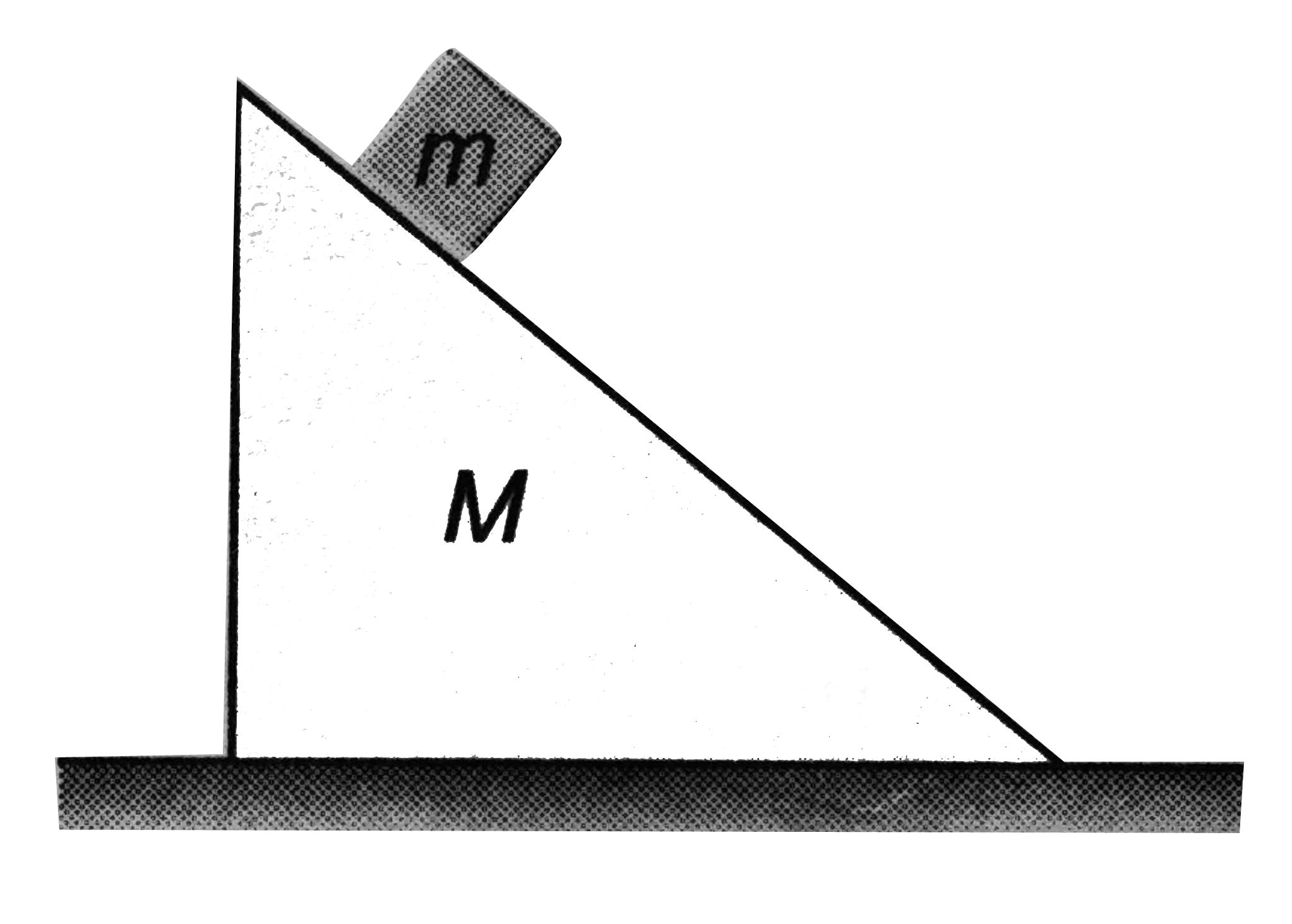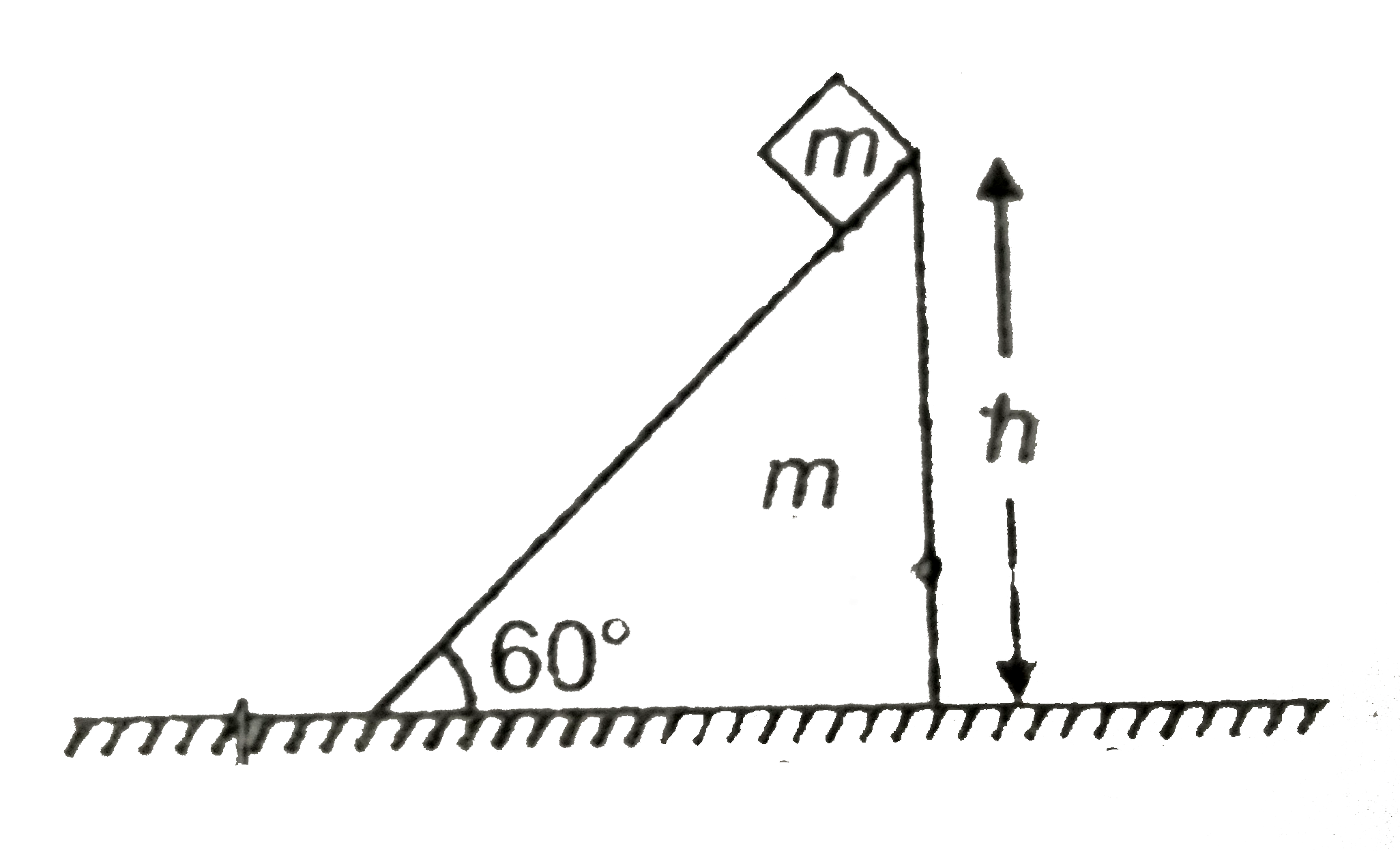A block of mass m is kept on a wedge of mass M . Initially the system is held. At certain time the system is released and the wedge is observed to move with acceleration A on inclined surface as shown. There is no friction anywhere. The acceleration of block (m) with respect to wedge (M) will be.
.
A rightward
Acosθ rightward
A cosθ leftward
none of these
The correct Answer is:B
Step by step video & image solution for A block of mass m is kept on a wedge of mass M . Initially the system is held. At certain time the system is released and the wedge is observed to move with acceleration A on inclined surface as shown. There is no friction anywhere. The acceleration of block (m) with respect to wedge (M) will be. . by Physics experts to help you in doubts & scoring excellent marks in Class 12 exams.
Related Playlists
- BOOK - MOTIONCHAPTER - NLM & FRICTIONEXERCISE - EXERCISE-266videos
NLM & FRICTION
- BOOK - MOTIONCHAPTER - NLM & FRICTIONEXERCISE - EXERCISE-2(Level-II)25videos
NLM & FRICTION
- BOOK - MOTIONCHAPTER - NLM & FRICTIONEXERCISE - SOLVED EXAMPLE16videos
NLM & FRICTION
- BOOK - MOTIONCHAPTER - NEWTON'S LAWS OF MOTION & FRICTION EXERCISE - Exercise - 3 Section-B12videos
NEWTON'S LAWS OF MOTION & FRICTION
- BOOK - MOTIONCHAPTER - ONE DIMENSION MOTIONEXERCISE - Exercise - 3 |Section - B Previous Year Problems | JEE MAIN12videos
ONE DIMENSION MOTION
Knowledge Check
- Question 1 - Select One
In the system shown, the initial acceleration of the wedge of mass 5M is (there is no friction anywhere)
 AzeroBg/2Cg/3Dg/4
AzeroBg/2Cg/3Dg/4 - Question 1 - Select One
In the system shown, the initial acceleration of the wedge of mass 5M is (there is no friction anywhere)
 AZeroB2g/23C3g/23DNone
AZeroB2g/23C3g/23DNone - Question 1 - Select One
A block of mass m is kept on an inclined plane of mass 2m and inclination α to horizontal. If the whole system is accelerated such that the block does not slip on the wedge then :
AThe normal reaction acting on 2m due to m is mgsecθBFor the block m to remain at rest with respect to wedge a force F=3mgtanα must be applied on 2mCThe normal reaction acting on 2m due to m is mgsecθDPseudo force acting on m with respect to ground is mgtanα towards west. - Question 1 - Select One
All the surfaces are smooth as shown in figure. The acceleration of mass m relative to wedge is :
 Ag sin θBg sin θ + a cos θCg sin θ - a cos θDa cos θ
Ag sin θBg sin θ + a cos θCg sin θ - a cos θDa cos θ
Similar Questions
A block of mass m is placed at rest on a smooth wedge of mass M placed at rest on a smooth horizontal surface. As the system is released
 View Solution
View SolutionA block of mass m is released from a wedge of mass m as shown in figure . Find the time taken by the block to reach the end of the wedge.
 View Solution
View SolutionIn the arrangement shown in the fig. the block of mass m lies on the wedge. Wedge is moving with acceleration a = 5 m/sec . Find the wedge acceleration of the block with respect to wedge.
View SolutionA block of mass m, is kept on a wedge of mass M, as shown in figure such that mass m remains stationary w.r.t. wedge. The magnitude of force P is
 View Solution
View SolutionIn the arrangement shown in the fig. the block of mass m lies on the wedge. Wedge is moving with acceleration a = 5 m/sec Find the wedge acceleration of the block with respect to wedge.
View SolutionIn the adjoining figure a wedge is fixed to an elevator moving upwards with an acceleration a. A block of mass m is placed over the wedge.Find the acceleration of the block with respect to wedge. Neglect friction
 View Solution
View Solution

